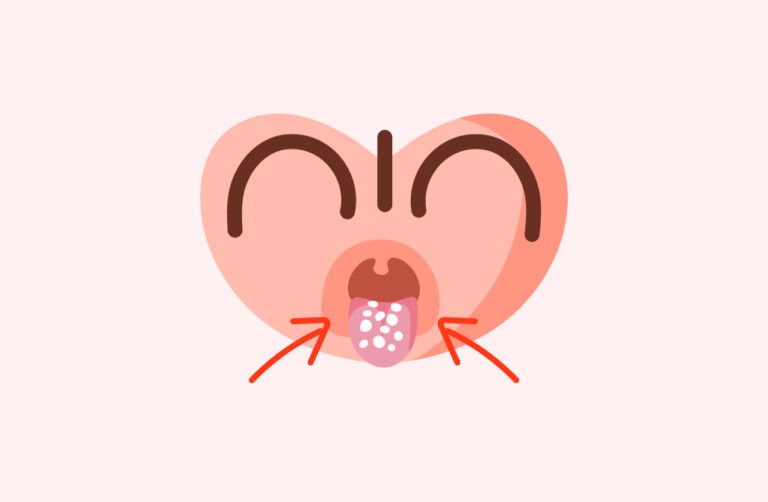Every parent—whether first-timer, sleep-deprived, or simply attentive—has paused at a tiny baby’s wince and wondered, “Is something wrong with my son or daughter’s digestion today?” When those small faces scrunch up during diaper changes, or when the usual giggle fades into cries, it sparks real worry. A fretful tummy, extended gaps between poos, or seeing hard, little stools can leave you feeling a bit helpless. Baby constipation isn’t just a minor hiccup—it interrupts routines, disrupts sleep, and sometimes even causes pain that feels unfairly puzzling. What are the most common reasons behind these tummy troubles, and what simple actions can truly help your baby? Let’s explore effective strategies, warning signs, and smart, medically valid steps you can take right at home, without losing peace of mind.
What is baby constipation? Normal vs. abnormal patterns
Baby constipation—the term races through parents’ minds at the mere sight of a hard or dry nappy change. But what does it actually mean? Is it just about how often your baby passes stools, or is there more to it? The reality: frequency is only part of the story. The texture, appearance, and ease of passing matter much more than the calendar. For breastfed infants, the pattern can be irregular but usually soft; sometimes, it’s normal not to have a bowel movement every day. Formula-fed infants, on the other hand, may have firmer, less frequent poos.
When does it get concerning? Imagine “pellet-like” or “marble-sized” stools, visible strains or tears, less than three bowel movements per week, or a baby turning red with effort—these all point toward baby constipation. A persistently swollen or tense belly, irritability during feeds, or a sudden change from easy-going diapers to stressful routines may signal that more attention is needed.
Causes of baby constipation
Dietary and feeding-related factors
Diet stands at the centre. Breast milk acts almost like a built-in laxative, full of prebiotics, easy-to-digest proteins, and just the right blend of sugars to keep things moving. Formula, especially those higher in casein, or with greater protein content, tends to linger in the gut, forming firmer stools. Did you ever wonder, “Did I prepare the formula correctly?” A too-thick bottle, even slightly, can make things worse—concentration matters! And for babies discovering solids: rice cereal, bananas, or too much refined food can all slow down digestion.
Hydration is an often-overlooked friend in digestion. Babies older than six months, especially after the introduction of solids, truly benefit from a few sips of water throughout the day. When fruits, vegetables, or purees low in fibre are the norm, constipation edges in.
Maturational and medical causes
Sometimes the digestive system is just… not fully ready. Guts grow, just like arms and legs do, and some babies will need a few weeks to adjust during feeding transitions. On rare occasions, medical causes like Hirschsprung disease or congenital hypothyroidism can block the natural wave-like movements that push stool through the gut. Lack of certain nerve cells, anatomic quirks, or neurological conditions can also play a role. And let’s not forget medicine: iron drops or certain antacids can quietly alter stool patterns.
Psychological aspects shouldn’t be dismissed, especially as children grow. Fear of pain, anxiety about toilet training, or stressful routine changes can lead to voluntary withholding, making constipation more stubborn.
Recognising and identifying baby constipation
Stool quality and typical signs
Look for stools that are hard, dry, or shaped like small pellets—distinct clues to baby constipation. If bowel movements come less than three times a week (after age 6 months), or you see streaks of blood in the diaper, especially alongside fussing, these are reliable warning signs. Tummy looking swollen? Appetite fading? The gut’s trying to tell you something.
Behavioural and physical symptoms
Watch for the tell-tale wincing, arching of the back, drawing knees to the chest, or a sudden refusal to eat. Irritability appears without warning, and diaper changes may bring tears. You might even see tiny spots of blood—this often means a small, superficial tear from straining.
Complications to be aware of
Ignoring constipation doesn’t just prolong discomfort. Over time, repeated straining can produce anal fissures—tiny, painful breaks in the skin—and a cycle of pain and fear of bowel movements. Some babies even slow down their eating when constipation gets persistent, affecting growth in rare situations.
Red flags requiring medical attention
Immediate attention is needed if there’s a failure to pass stool for more than five days, signs of persistent vomiting, a very swollen abdomen, unexplained lethargy, blood with every motion, or ongoing refusal to feed. A newborn who hasn’t passed meconium (that first sticky stool) within 24–48 hours also needs prompt review.
Diagnosing baby constipation
A healthcare provider, often a paediatrician, will approach baby constipation by first listening—a detailed look at feeding patterns, stool frequency and appearance, any squeezing or straining, and other symptoms like vomiting or weight loss. A gentle abdominal examination, sometimes combined with looking for fissures around the anus or rarely a rectal exam, helps provide clarity. In rare cases, blood tests (for thyroid function) or an x-ray can help find deeper explanations if routine measures do not bring relief.
Acute constipation—usually tied to dietary change or illness—frequently resolves with home care. When the problem becomes chronic (beyond two weeks or recurring often), your doctor may consider further investigations.
Relief strategies: easing baby constipation at home
Gentle physical methods
- Tummy massage: Using slow, circular clockwise motions can nudge the bowels into action.
- “Bicycle legs” exercise: Mimic pedalling to relax abdominal muscles and stimulate digestion.
- Warm bath: The soothing effect of warm water helps tighten or contracted belly muscles relax, sometimes leading to immediate relief.
Dietary adjustments
- For babies older than 6 months: Prunes, pears, peaches, peas, and broccoli in pureed form are fibre-rich and gentle. Small sips of water between meals support hydration.
- For formula-fed infants: Always double-check that bottles are prepared with the right balance—never increase powder for “extra nutrition,” as this can actually worsen constipation.
- Diluted juice: Occasionally, very small quantities of diluted prune or pear juice, after doctor’s approval, can be helpful for older babies.
Preventing and managing diaper rash
Clean and dry the diaper area after every bowel movement. Consider a thin layer of zinc oxide cream for protection. When possible, let your baby go diaper-free for a few minutes—fresh air works wonders.
Medical interventions and professional advice
If gentle methods and dietary tweaks aren’t working, physicians may recommend a medicinal approach. Glycerin suppositories—used strictly after medical approval—can provide short-term relief but aren’t meant for routine use. In persistent cases, prescription softeners (such as polyethylene glycol or lactulose syrup) or tailored probiotics may be offered, all under paediatric guidance.
Never try over-the-counter laxatives, mineral oils, or enemas unless specifically directed by your doctor. Babies’ digestive systems are sensitive; even “natural” products have real risks at this age.
Prevention strategies: from formula to the family table
- Formula preparation: Measure water first, then add powder as per instructions—no improvisation.
- Gradual transition to solids: Start with one fibre-rich food at a time, monitor for reactions, and avoid relying on rice cereal or excessive bananas.
- Adequate hydration: Offer water with meals for older infants starting solids.
- Encourage movement: Regular floor time, play, and soft exercise keep bowels healthy.
- Track changes: A simple note about each bowel movement—frequency, look, and effort—helps you spot issues early.
Parenting guidance and support
Daily routines matter—meals, naps, and activity are all signals that help your baby’s system settle. Including gentle tummy massage or “bicycle legs” into your routine can make a noticeable difference. Don’t be alarmed by every grimace—babies often grunt or turn red, especially if they’re concentrating, without genuine discomfort.
Remember, responding calmly, providing gentle affection, and seeking pauses for yourself minimises stress for both you and your baby. Should there be doubts, an ongoing problem, or questions about your caregiver approach, a paediatrician remains an invaluable resource. No parent is expected to make sense of every nappy drama alone.
Key Takeaways
- Baby constipation often appears during dietary shifts, like starting formula or introducing new foods, and is common in the first months of life.
- Monitor not just frequency but stool texture and how comfortable your baby is—unusual straining, blood, or ongoing pain are reasons to pause and reconsider.
- Immediate relief often comes from increased hydration, correct formula mixing, introducing appropriate fruits and vegetables, and gentle movement.
- Medicines or advanced interventions should be reserved strictly for medical guidance—avoid home remedies such as adult laxatives.
- Support exists: paediatricians, credible healthcare professionals, and educational tools like the application Heloa offer personalised support and free health questionnaires for your child—at your fingertips, any time you need answers.
Questions Parents Ask
Can teething cause constipation in babies?
A common thought—“Could those erupting tiny teeth be to blame for this?!”—crosses many minds. Medically, there’s no direct link between teething and baby constipation. That said, changes in routine during teething—maybe a cranky refusal to eat or drink—may lead to less fluid and, as a side effect, slightly harder stools. Keeping your baby hydrated and comfortable is always a good call. If in doubt, your health care provider can provide clarity.
Can certain foods cause constipation in babies starting solids?
Absolutely—certain foods do impact the little digestive system more than others. Low-fibre choices like rice cereal and bananas, especially when solids are new, often increase the risk of baby constipation. On the positive side, introducing small helpings of pureed pears, peaches, prunes, peas, or broccoli, supports softer stools. A gradual, watchful transition with one food at a time is generally best. Each child’s gut reacts just a little differently—and patience truly helps.
When should I worry about baby constipation?
Mild cases nearly always resolve with a few simple changes, but some signs need a closer look: persistent vomiting, a very swollen or painful belly, repeated blood in the stools, refusal to eat, or going several days without passing stools while showing clear distress. In these cases, prompt professional evaluation is wise. Trust that medical advice is always there to support you and your growing little one.
Further reading:









